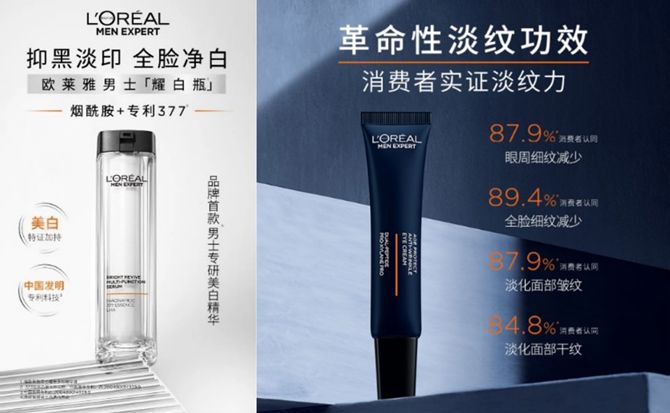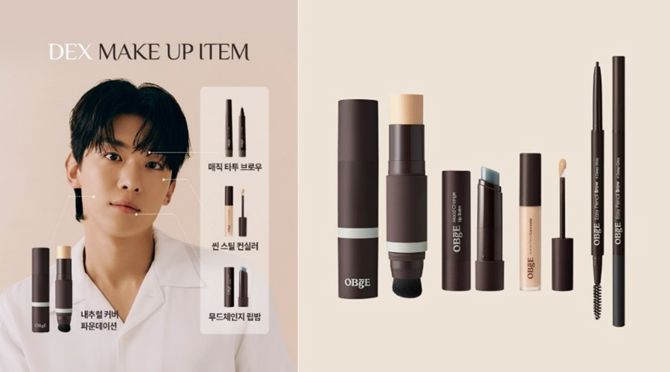The evolution of self-care among men, with factors such as societal change and growing interest in skin care and fragrances, is contributing to more male consumers looking beyond the traditional men’s grooming category for beauty and personal care products. With growth expected in premium men’s fragrances, skin care, and to a lesser extent, in men’s colour cosmetics, 2024 is set to be a pivotal year for the male beauty consumer in Asia Pacific.
Men’s skin care outpaces other categories, but premium men's fragrances stand to gain prominence
In Asia Pacific, value sales of men’s grooming are expected to grow by 5.4% at constant prices in 2023. Within men's grooming, skin care is the largest category in terms of retail value sales, accounting for one third of the total category. Men's fragrances are projected to experience the most significant value growth at 6.8% in constant terms over 2023-2027.
Men’s fragrances in Asia Pacific is anticipated to witness substantial growth, driven particularly by the premium segment. Euromonitor International’s Beauty and Personal Care Forecast Model (October 2023 Update) indicates a robust CAGR of 8.2% for premium men’s fragrances and a 5% for the mass counterpart between 2022 and 2027.
Fragrances has emerged as a key component of men's grooming routine in Asia, with growing demand for premium, high-quality, unique scents.
In Asia Pacific, 46% of male beauty consumers use fragrances more than once a week
Source: Euromonitor International’s Voice of the Consumer: Beauty Survey 2023
Male consumers exhibit a greater preference for brand value compared to females. In Asia Pacific, 24% of male fragrance users desire strong or well-known brands, surpassing 19% of female users who prioritise this factor as their top desired feature for fragrance.
Market players have begun to capitalise on the significant potential of men’s premium fragrances in Asia. In June 2023, Kering's purchase of Creed, famed for its men's fragrance Aventus, demonstrates the company’s intention to tap into burgeoning markets such as China, along with travel retail.
Increased skin care knowledge leads to demand for specialised products
According to Euromonitor International’s Beauty and Personal Care Forecast Model (October 2023 Update), men’s skin care in Asia Pacific is predicted to record a 4.7% CAGR between 2023 and 2027 in constant value, with 3.5% growth for total skin care.
The growth drivers vary across different markets, reflecting the diverse developmental stages in men's skin care awareness. In markets where men's skin care awareness is relatively mature, such as China and South Korea, demand is evolving towards a more advanced level. The product offerings are developing diversification towards a more specialised range, from basic functionalities such as oil control or moisturising, to anti-ageing and sun protection.
L’Oréal Men Expert launched brightening serum and anti-wrinkle eye cream for men in China
Source: L’Oréal Men
Social media influences male consumers to embrace use of colour cosmetics
With the evolving perception of masculinity, there is a growing acceptance among men to wear cosmetics to enhance their appearance and boost self-confidence. This cultural shift has led to the emergence of men's colour cosmetics tailored specifically to this demographic. As male consumers increasingly pay attention to appearance and individual expression, more of them are beginning to integrate colour cosmetics into their daily grooming routines.
An increasing number of male consumers are embracing the regular use of make-up to achieve a polished but natural look. In Asia Pacific, over 19% of male consumers use BB or CC cream more than once a week, with 7% of them using it daily. The percentage of male consumers using concealer more than once a week grew from 9% to 19% between 2019 and 2023, according to Euromonitor International’s Voice of the Consumer: Beauty Survey.
Men’s cosmetics brand Obge in South Korea introduced foundation stick, concealer, tinted lip balm and eyebrow pencil
Source: OBGE
The development of masculinity standards is driven by factors such as pop culture, media education, and consumer culture. Pop culture, like K-pop, and social media have accelerated the shift from a singularly masculine ideal to a more diverse image of male, also providing channels for men to learn about and discuss grooming. At the same time, the influence of mainstream media remains significant. In 2021, China’s media supervision authorities introduced regulations restricting the appearance requirements for male artists, such as banning those with an “effeminate” image. Although the act of enhancing one's appearance is no longer associated with the traditional stereotype of "effeminate", this emphasis on the "correct aesthetic" will limit the diverse development of men's grooming products in China.
The evolution of men’s grooming in Asia Pacific
In Asia Pacific, men’s grooming trends of 2024 will focus on product diversification, efficacy upgrading and premiumisation. With the definition of the ideal masculine image becoming increasingly diverse and inclusive in the region, an increasing number of male consumers are willing to invest time in learning about grooming and selecting suitable products for their individual needs. Those with established grooming routines are likely to seek products with specific benefits or opt for premium brands over general-use products.
In 2024, value sales of men’s grooming in Asia Pacific are expected to grow by 4.6%. The positive factors driving the growth include increased interest in fragrances, men's colour cosmetics, and untapped demographics, while the growing popularity of cosmetic procedures such as Botox and hair loss treatments is expected to create new demands.
Learn more about men’s grooming in our briefing The Evolution of Men’s Grooming and Men’s Grooming country reports.
Survey Source: Euromonitor International Voice of the Consumer: Beauty Survey 2023
Note: The survey-takers are only those male respondents who reported using cosmetics at least sometimes.
